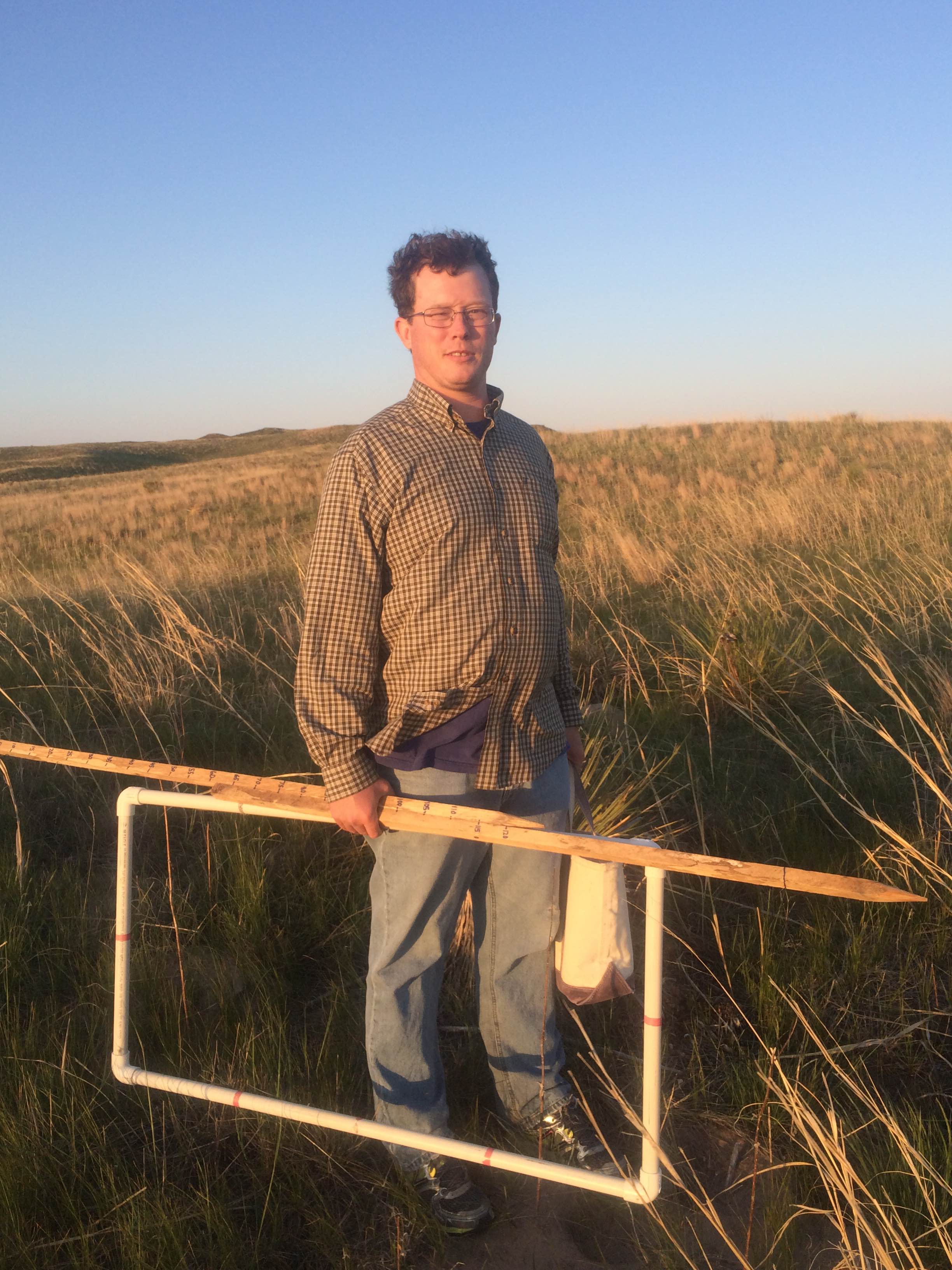
As an increasing number of wind energy facilities are installed across the Great Plains, researchers at the University of Nebraska-Lincoln are asking whether noise associated with developments is altering the acoustic environment to the point habits would be unsuitable for songbirds.
In a first such study conducted in the Sandhills, the answer would appear to be: It doesn’t.
“Our findings suggest intact, low-grazing intensity rangelands with wind energy infrastructure in the Nebraska Sandhills can host diverse grassland songbird communities ”said E. J. Raynor, lead researcher on the project, which recently was published in The Condor: Ornithological Applications. “Additionally, this first look into grassland songbird acoustic activity provides insight about the Nebraska Sandhills soundscape, a potential baseline for comparison with less, intact grasslands.”
Raynor, together with Cara Whalen, Mary Bomberger Brown and Larkin Powell, all with the School of Natural Resources, recorded the soundscape at six transects near a small-scale wind turbine facility in western Nebraska. Three transects were within 770 meters of wind turbines and three were without turbines but at growing distances from the energy development.
The researchers collected 618 two-minute recordings taken during the dawn songbird chorus, and then analyzed them, winnowing the total to 486 usable recordings. Of those, 32 captured wind turbine noise, which lasted the entire two minutes. Two of the reference sites (those farthest away from the energy development) recorded no wind turbine noise at all.
The recordings captured the song of 21 breeding grassland species in the reference areas and 19 species in the wind turbine areas.
“Overall, species composition within wind facility and reference habitat was identical, with the exception of Northern Flicker and American Robin,” Raynor wrote.
The researchers also didn’t notice much difference in the birds’ “acoustic expression” when comparing turbine sites with reference ones. While the turbine sites did record mechanical noise, it was not constant and it was of a low frequency.
“However, it is possible that acoustic expression between the treatments was similar because avian communities within the wind energy facility may sing more loudly or use higher frequencies than communities in reference grasslands to mitigate acoustic masking by low-frequency noise,” the researchers noted.
They encouraged additional research to examine whether living in noisy environments had an effect on birds’ feeding rates or body condition.
They also acknowledged some shortcomings with the study, including that is was conducted during one spring season and that the auditory analysis only focused on common breeding birds and not their density. They suggested future studies address these shortcomings by focusing on different species as well as broader spatial scales and different times.
“Our acoustic work on morning chorus in this relatively, intact grassland ecosystem demonstrates that this soundscape is not dominated by human-made sounds and is rather filled with a diverse suite of sounds of grassland birds,” Raynor said.
To learn more, access the study here.
Shawna Richter-Ryerson, Natural Resources